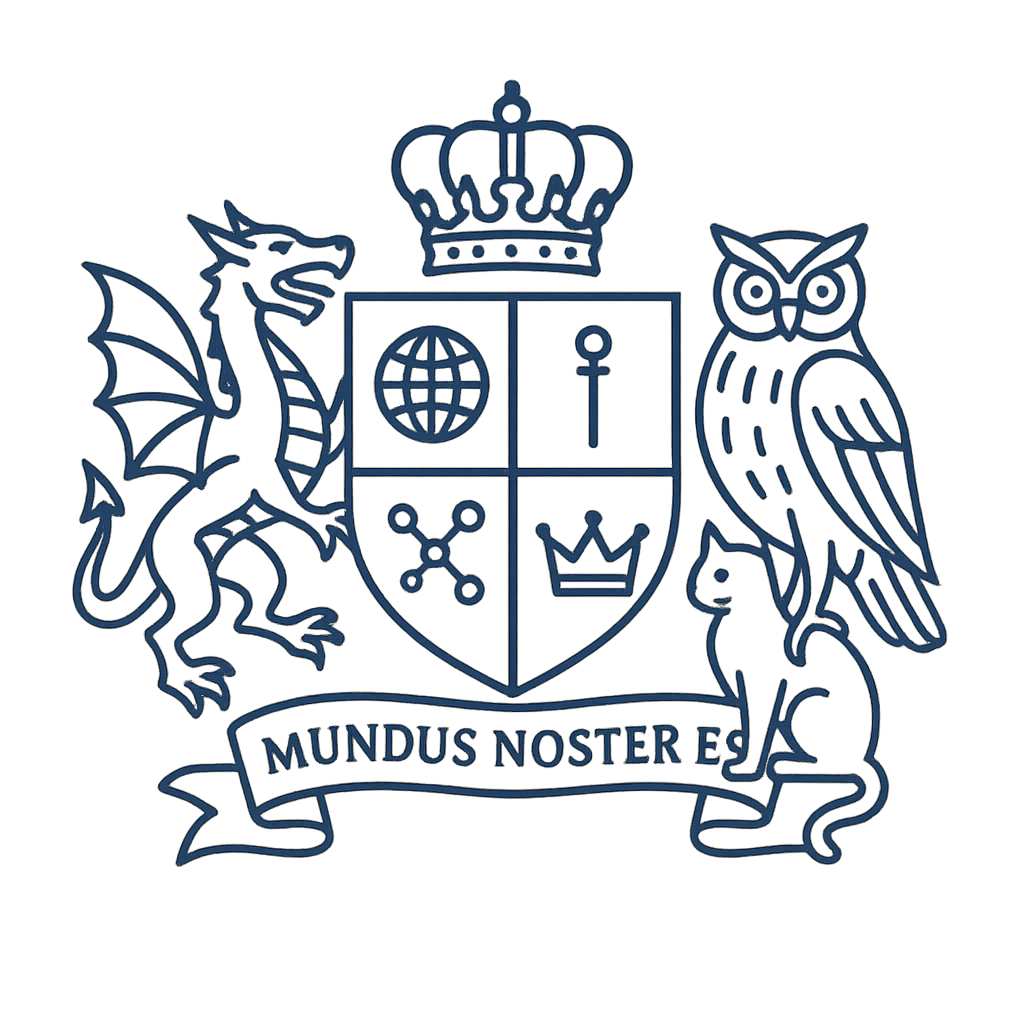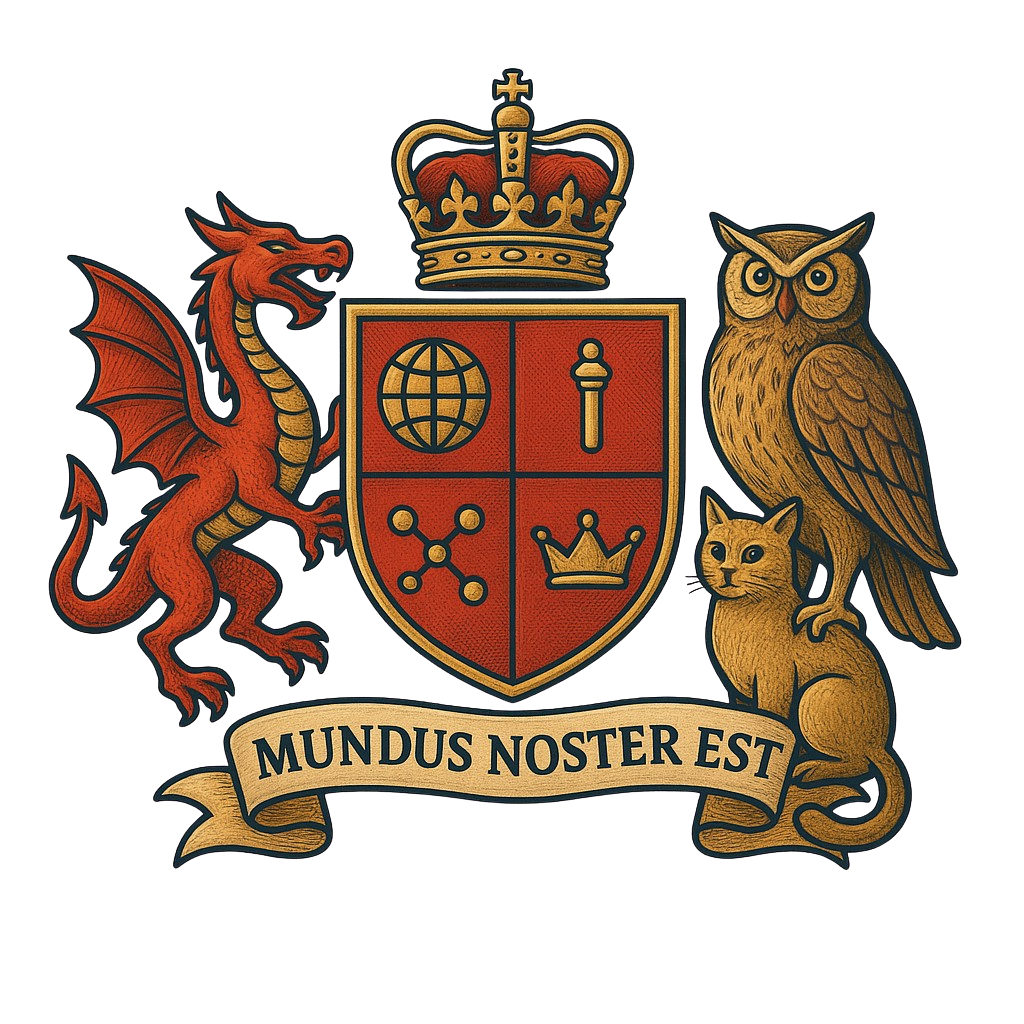Royal Titles Around the World: A Global Guide to Nobility
Introduction
While many people are familiar with European titles like Duke and Baron, noble titles exist in cultures across the globe, each with unique names, meanings, and traditions. From Japanese Daimyos to Indian Maharajas, from Ottoman Sultans to Ethiopian Rases, nobility has taken countless forms throughout history. This comprehensive guide explores how different cultures have structured their aristocracies.
European Noble Titles
British Nobility
Hierarchy (highest to lowest):1. King/Queen (Monarch)
2. Prince/Princess
3. Duke/Duchess
4. Marquess/Marchioness
5. Earl/Countess
6. Viscount/Viscountess
7. Baron/Baroness
Unique Features:- Peerage system with seats in House of Lords (historically)
- Titles tied to specific geographic locations
- "The Right Honourable" and "The Most Honourable" honorifics
- Baronets (hereditary knighthoods)
- Knights and Dames (non-hereditary)
- Duke: "Your Grace"
- Marquess through Baron: "Lord" or "Lady"
- Knight: "Sir" (Dame for women)
French Nobility (Historical)
Hierarchy:1. Roi/Reine (King/Queen)
2. Prince/Princesse
3. Duc/Duchesse (Duke/Duchess)
4. Marquis/Marquise
5. Comte/Comtesse (Count/Countess)
6. Vicomte/Vicomtesse (Viscount/Viscountess)
7. Baron/Baronne
8. Chevalier (Knight)
Unique Features:- Noblesse d'épée (nobility of the sword) - ancient military nobility
- Noblesse de robe (nobility of the robe) - judicial/administrative nobility
- Abolished during the Revolution (1789), reinstated multiple times
- Many titles still used socially today
German Nobility
Traditional Titles:1. Kaiser/Kaiserin (Emperor/Empress)
2. König/Königin (King/Queen)
3. Großherzog/Großherzogin (Grand Duke/Duchess)
4. Fürst/Fürstin (Prince/Princess)
5. Herzog/Herzogin (Duke/Duchess)
6. Landgraf/Landgräfin (Landgrave)
7. Markgraf/Markgräfin (Margrave)
8. Pfalzgraf/Pfalzgräfin (Count Palatine)
9. Graf/Gräfin (Count/Countess)
10. Freiherr/Freifrau (Baron/Baroness)
11. Ritter (Knight)
Unique Features:- Complex system due to many independent states before unification
- "von" prefix indicates nobility (e.g., von Habsburg)
- Officially abolished in 1919 but titles used as part of surnames
- Distinction between "Hochadel" (high nobility) and "Niederer Adel" (lower nobility)
Spanish Nobility
Hierarchy:1. Rey/Reina (King/Queen)
2. Infante/Infanta (Prince/Princess)
3. Grande (Grandee - special category)
4. Duque/Duquesa (Duke/Duchess)
5. Marqués/Marquesa (Marquess/Marchioness)
6. Conde/Condesa (Count/Countess)
7. Vizconde/Vizcondesa (Viscount/Viscountess)
8. Barón/Baronesa (Baron/Baroness)
9. Señor/Señora (Lord/Lady)
10. Hidalgo (Lower nobility)
Unique Features:- Grandees have special privileges and proximity to the monarch
- Many ancient titles still actively used
- Complex system of "Grandes de España" rankings
- Titles can pass through female lines
Italian Nobility
Traditional Titles:1. Re/Regina (King/Queen)
2. Principe/Principessa (Prince/Princess)
3. Duca/Duchessa (Duke/Duchess)
4. Marchese/Marchesa (Marquess/Marchioness)
5. Conte/Contessa (Count/Countess)
6. Visconte/Viscontessa (Viscount/Viscountess)
7. Barone/Baronessa (Baron/Baroness)
8. Nobile (Noble)
9. Cavaliere (Knight)
Unique Features:- Multiple kingdoms and city-states created varied systems
- Papal nobility (granted by the Pope)
- Abolished in 1946 but titles still used socially
- "di" indicates nobility (e.g., di Medici)
Russian Nobility (Historical)
Hierarchy:1. Tsar/Tsarina (Emperor/Empress)
2. Tsarevich/Tsarevna (Crown Prince/Princess)
3. Velikiy Knyaz/Velikaya Knyaginya (Grand Duke/Duchess)
4. Knyaz/Knyaginya (Prince/Princess)
5. Graf/Grafinya (Count/Countess)
6. Baron/Baronessa
7. Dvoryanin (Noble/Gentleman)
Unique Features:- Completely abolished after 1917 Revolution
- Table of Ranks (1722) allowed non-nobles to gain titles through service
- "-sky" or "-ov" suffixes common in noble names
- Eastern Orthodox Church influence on titles and succession
Middle Eastern & Islamic Nobility
Ottoman Empire
Titles:1. Sultan/Sultana (Sovereign ruler)
2. Padishah (Emperor)
3. Şehzade (Prince)
4. Pasha (High-ranking official, military commander)
5. Bey (Regional governor, lord)
6. Ağa (Master, commander)
7. Emir/Amir (Commander, prince)
Unique Features:- Combined religious and political authority
- Harem system with ranked concubines and wives
- Devşirme system allowed non-nobles to rise through military service
- Lasted over 600 years (1299-1922)
Arab Nobility
Common Titles:1. Malik/Malika (King/Queen)
2. Sultan/Sultana
3. Emir/Emira (Prince/Princess, Commander)
4. Sheikh/Sheikha (Elder, leader, chief)
5. Sayyid/Sayyida (Lord/Lady, descendant of Prophet Muhammad)
6. Sharif/Sharifa (Noble, especially descendants of Prophet)
Unique Features:- Tribal leadership structure influences nobility
- Religious lineage (especially from Prophet Muhammad) carries high status
- Many Gulf states still have active monarchies
- Sheikh can indicate both nobility and religious scholarship
Persian/Iranian Nobility (Historical)
Titles:1. Shahanshah (King of Kings - Emperor)
2. Shah/Shahbanu (King/Queen)
3. Shahzadeh (Prince/Princess)
4. Mirza (Prince, educated man)
5. Khan (Lord, ruler)
6. Beg (Bey)
Unique Features:- Ancient tradition dating back to Achaemenid Empire
- Monarchy abolished in 1979
- Complex interaction with Islamic titles
- "Mirza" before name indicates prince; after name indicates educated person
Asian Noble Titles
Japanese Nobility (Kazoku System - Historical)
Hierarchy (Meiji Era 1869-1947):1. Tennō/Kōgō (Emperor/Empress)
2. Kōshaku (Prince/Duke)
3. Kō (Marquis)
4. Haku (Count)
5. Shi (Viscount)
6. Dan (Baron)
Traditional Feudal Titles:- Shōgun (Military dictator)
- Daimyō (Feudal lord, controlled domains)
- Samurai (Warrior class - lower nobility)
- Modeled after European systems during modernization
- Abolished after WWII except imperial family
- Samurai were lower nobility/warrior class
- Emperor still exists as symbolic figure
Chinese Imperial Titles
Imperial Family:1. Huángdì/Huánghòu (Emperor/Empress)
2. Huángtàizǐ/Huángtàinǚ (Crown Prince/Princess)
3. Qīnwáng (Prince of the Blood - 1st rank)
4. Jùnwáng (Prince of the Blood - 2nd rank)
Nobility Ranks (Qing Dynasty):1. Gōng (Duke)
2. Hóu (Marquis)
3. Bó (Earl/Count)
4. Zǐ (Viscount)
5. Nán (Baron)
Unique Features:- Imperial system lasted millennia until 1912
- Mandate of Heaven - divine right to rule
- Complex concubine ranking system
- Eunuch system with own hierarchy
- Civil service exams could elevate commoners
Indian Subcontinent
Hindu Titles:1. Samrat/Samrajni (Emperor/Empress)
2. Maharaja/Maharani (Great King/Queen)
3. Raja/Rani (King/Queen)
4. Yuvaraja (Crown Prince)
5. Kumar/Kumari (Prince/Princess)
6. Rao/Rani (Lord/Lady)
7. Thakur (Lord, feudal lord)
8. Zamindar (Landowner with administrative rights)
Muslim Titles (Mughal Era):1. Badshah/Begum (Emperor/Queen)
2. Shahzada/Shahzadi (Prince/Princess)
3. Nawab/Begum (Governor, nobleman)
4. Mir/Begum (Lord/Lady)
5. Khan (Chief, nobleman)
Unique Features:- Princely states existed until 1947 independence
- Hundreds of kingdoms with varying levels of autonomy
- British Raj recognized but controlled native princes
- Titles officially abolished but still used socially
- Complex caste system intersected with nobility
Thai Nobility
Royal Titles:1. Phra Chao Yu Hua (King)
2. Phra Borom Rachini (Queen)
3. Chao Fa (Prince/Princess - highest)
4. Phra Ong Chao (Prince/Princess - children of Chao Fa)
5. Mom Chao (Prince/Princess - grandchildren)
Noble Titles:1. Chaophraya (Highest-ranking noble title)
2. Phraya
3. Phra
4. Luang
5. Khun
Unique Features:- Still an active monarchy
- Complex hierarchy based on distance from king
- Sakdina system (feudal ranking by points)
- Nobles could be granted titles for service
African Noble Titles
Ethiopian Nobility (Historical)
Hierarchy:1. Nəgusä Nägäst (King of Kings - Emperor)
2. Nəgus (King)
3. Ras (Prince, Duke - highest noble title)
4. Dejazmach (Earl, Count - literally "commander of the gate")
5. Fitawrari (Commander of the vanguard)
6. Grazmach (Commander of the left)
7. Qenyazmach (Commander of the right)
8. Balambaras (Commander of a fortress)
Unique Features:- Ancient Christian kingdom
- Military titles that became hereditary nobility
- Monarchy overthrown in 1974
- Claimed descent from King Solomon and Queen of Sheba
West African Traditional Rulers
Common Titles:1. Oba (King - Yoruba)
2. Emir (Islamic ruler - Northern Nigeria)
3. Eze (King - Igbo)
4. Asantehene (King of Ashanti)
5. Ooni (King of Ife)
6. Sarki (Chief - Hausa)
7. Lamido (Fulani ruler)
Unique Features:- Many traditional rulers still recognized today
- Often hold ceremonial power alongside modern government
- Hereditary and elected systems both exist
- Strong connection to cultural and religious authority
Zulu Kingdom
Titles:1. Inkosi (King)
2. iNdlovukazi (Queen Mother)
3. iNkosana (Prince)
4. iNduna (Chief, headman)
Unique Features:- Still exists as cultural kingdom within South Africa
- Strong warrior tradition
- Military structure influenced nobility
- Shaka Zulu centralized power in 19th century
Other Notable Systems
Hawaiian Nobility (Historical)
Titles:1. Aliʻi nui (High chief, king)
2. Aliʻi (Chief, noble)
3. Konohiki (Overseer, lesser chief)
4. Kahunas (Priests - high status)
Unique Features:- Kingdom existed until 1893
- Kapu system regulated behavior
- Monarchy overthrown by U.S. interests
- Noble lineages tracked through chants
Aztec Nobility (Historical)
Classes:1. Tlatoani (Speaker - Emperor)
2. Cihuacoatl (Female Serpent - Prime Minister)
3. Tecuhtli (Lord)
4. Pipiltin (Nobility class)
5. Cuauhtli/Ocelotl (Eagle/Jaguar Warriors)
Unique Features:- Meritocratic elements - warriors could become nobles
- Complex religious and military hierarchy
- Destroyed by Spanish conquest (1521)
- Nobility had distinct dress and privileges
Modern Nobility Worldwide
Countries with Active Monarchies (2025):
- Europe: United Kingdom, Spain, Netherlands, Belgium, Luxembourg, Liechtenstein, Monaco, Sweden, Norway, Denmark
- Middle East: Saudi Arabia, Jordan, UAE, Qatar, Kuwait, Bahrain, Oman
- Asia: Japan, Thailand, Brunei, Bhutan, Cambodia, Malaysia
- Africa: Morocco, Eswatini (Swaziland), Lesotho
- Oceania: Tonga
The Evolution to Digital Nobility
Just as cultures around the world created their own systems of nobility adapted to their values and needs, the digital age has created its own interpretation. Digital nobility represents a modern, egalitarian approach where prestige and status are earned in the realm of the World Wide Web rather than through birthright or conquest.
This global perspective shows that the human desire for hierarchy, recognition, and status is universal—only the forms and names change across cultures and eras.
Conclusion
From European Dukes to Japanese Daimyos, from Arab Sheikhs to Ethiopian Rases, nobility has taken countless forms across human civilization. While the specific titles and structures vary dramatically, they all serve similar purposes: organizing society, distributing power, and recognizing achievement or lineage.
Understanding these diverse systems helps us appreciate both the universality of social hierarchy and the creativity of different cultures in structuring their societies. Whether historical or digital, nobility continues to fascinate us as a symbol of achievement, status, and prestige.
Mundus Noster Est — The world is ours.
